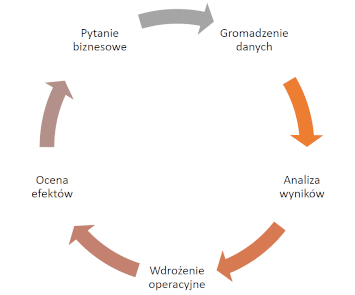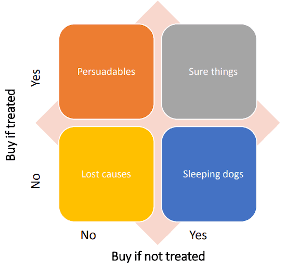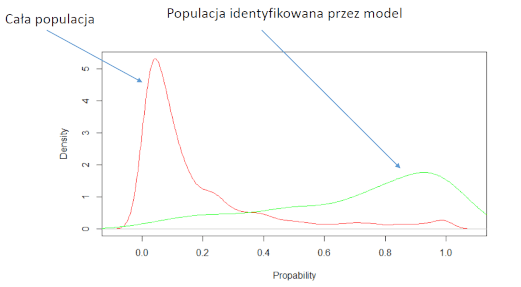Introduction
The issue of optimizing marketing processes is closely related to the number of costs incurred. The challenge is to obtain a guarantee or a high probability of reaching customers with the greatest purchasing potential with a certain budget for marketing campaigns. The tool to achieve this goal is the skillful building of target groups for the planned marketing campaigns. This issue, although widely used on the market and supported by mature technology, creates numerous problems for organizations. This article focuses on three main challenge areas:
- data preparation for target group designation
- methodology of conducting marketing campaigns
- measurement of the effectiveness of marketing activities undertaken
Data integration and quality
If a company contacts its customers through several channels, e.g. it has an online store and a network of stationery stores, an important issue is the so-called data deduplication. Deduplication means that we identify customers who are one person in several channels (systems).

It shows that there are important reasons to treat all customers at the table as one person. There are equally great reasons why these entities should not be associated with one person. After all, there is no clear confirmation for all criteria. In making any decision, we assume the risk that it is inappropriate. Leaving entities as separate clients results in the fact that certain information is not integrated, therefore the construction of predictive models is burdened with the risk that not all transactions will be correctly assigned to clients.
In turn, by combining entities and giving them the features of one person, we significantly improve the level of knowledge about a given Client, and we risk that we have combined the transaction data of several people, which will also negatively affect the predictive power of possible models.
What to do?
Business knowledge, market knowledge, and architectural conditions of the designed customer database come in handy. If the entities show fragmentary features of one person, this may indicate, for example, household purchases. The wife makes purchases from her husband's account because he has discounts, the son makes a purchase using his mother's address, and the husband orders the goods and gives his work address as the delivery address. Identifying these events requires knowledge of the market, and in technical terms, handling them may boil down to e.g. building a household facility.
Another solution is the dynamics of assigning entities to a given client. This means that at any time you can decide whether the entities are still a merger, or whether we know that the merger of the entities was incorrect and, based on the current knowledge, they should be separated into two different clients.

This approach requires early decision-making in the information architecture so that the state of entities (and more importantly transactions) can be restored to a selected date. However, it is the most flexible approach, tailored to the data analysis process.
The scientific method as a tool of the marketing process
Marketing activities, especially those related to recommendations or direct campaigns, are, from an academic perspective, nothing more than scientific experiments. It follows that during the implementation of marketing campaigns, it is necessary to maintain the rigor of the scientific experiment. For example, a widely neglected issue is the proper selection and control (sic!) of the control group. A control group is a group of customers that is the "background" for customers to whom a marketing campaign has been sent. This is a group of clients to whom communication was not sent, and the selection of entities for this group is not and cannot be accidental.

An exemplary, popular segmentation concerns the customer's willingness to buy a product under the influence of marketing communication. Its development also requires a control group, because it is necessary to know not only how the customers who received the marketing message work, but also how the customers who did not receive it work. If segmentation is the subject of the study, the control group should include equal and statistically sufficient numbers corresponding to individual segments.
Measurement of campaign effects
The measurement of the effects of marketing activities is twofold: firstly, we measure whether the analytical tools used correctly divide customers concerning the characteristics adopted a priori. If the subject of the analysis is segmentation, it should be examined whether the identified segments differ from each other and whether the customers within a given segment are similar to each other. If the subject of the analysis is a prediction (e.g. purchase of a product), we are interested in the distribution of the probability of purchase for the entire customer base and for the group of customers, where the probability of purchase was determined as high. For example, the figure below shows the average probabilities for the entire customer base (red line) and customers classified as potentially interested in buying.

Another issue is the measurement in terms of business. Of course, we expect and assume that if the models function properly and differentiate the population of our clients, it will also be measurable in terms of business. Unfortunately, this is not always true: perfect segmentation or predictive models will be business effective if the company can offer selected customers appropriate products or quality of service.
Conclusions
Based on our design experience, the following conclusions can be drawn from the above considerations:
- The modeling process should be embedded in business conditions; the knowledge of people working in a given business over the years cannot be overestimated
- The architecture of the analytical system should address business risks: e.g. issues of merging and dividing entities or handling marketing consent
- The analytical tool, along with its implementation use, and interpretation of results, is not a big challenge today. The challenge lies in the process of implementing marketing research, which requires rigorous application of the scientific method